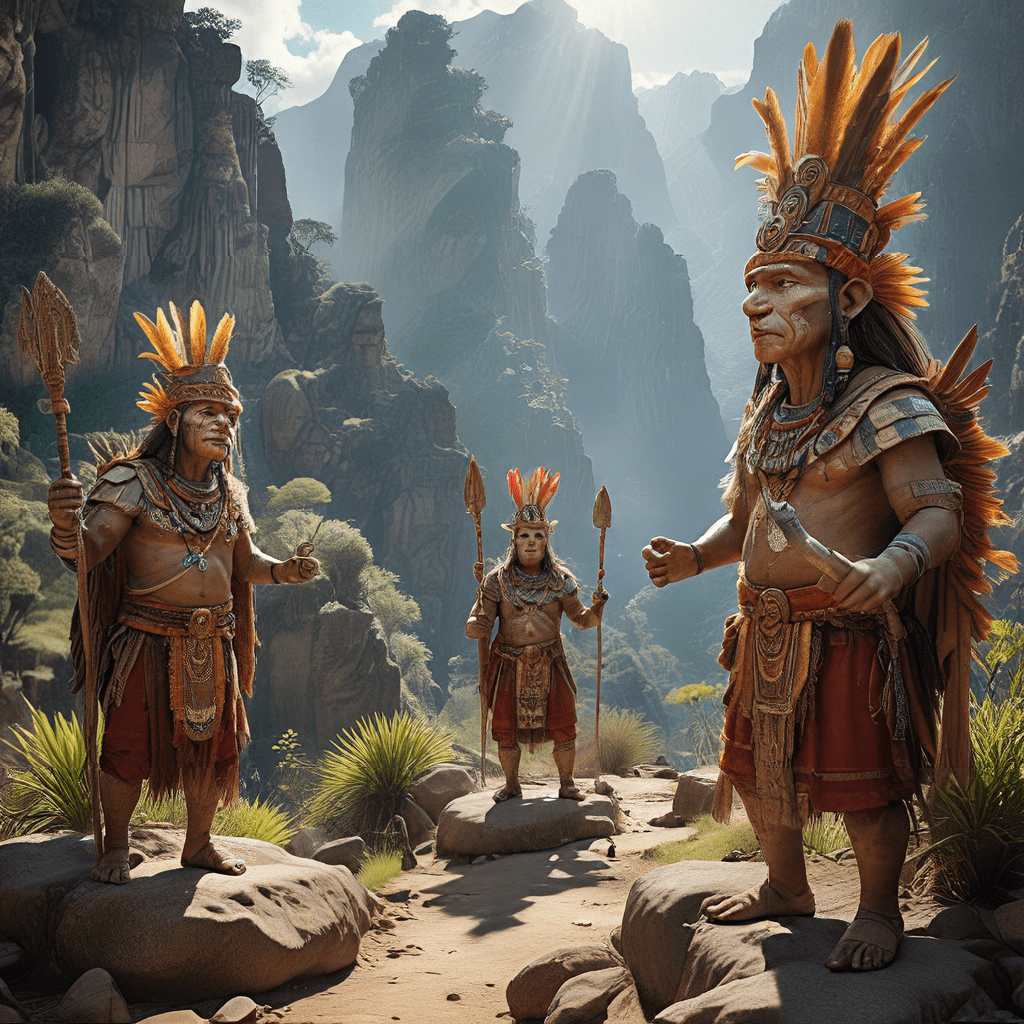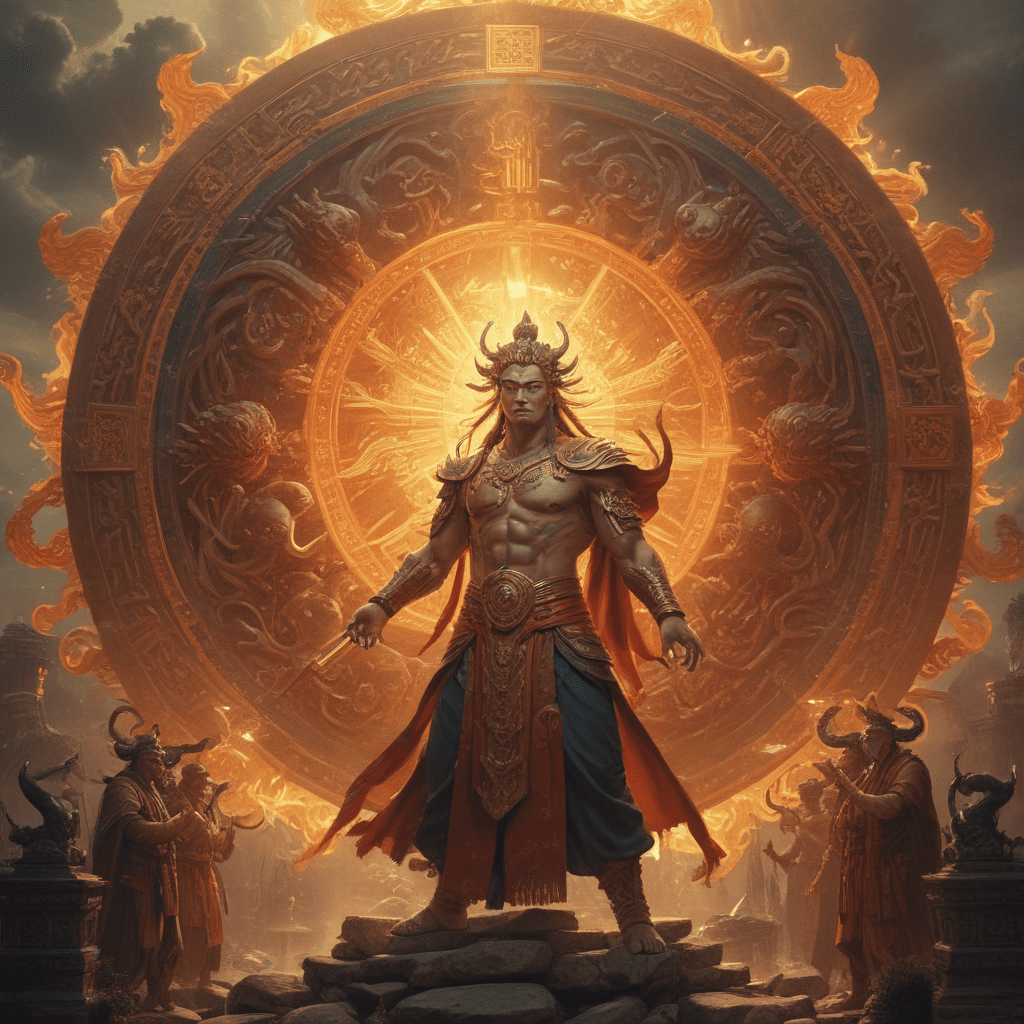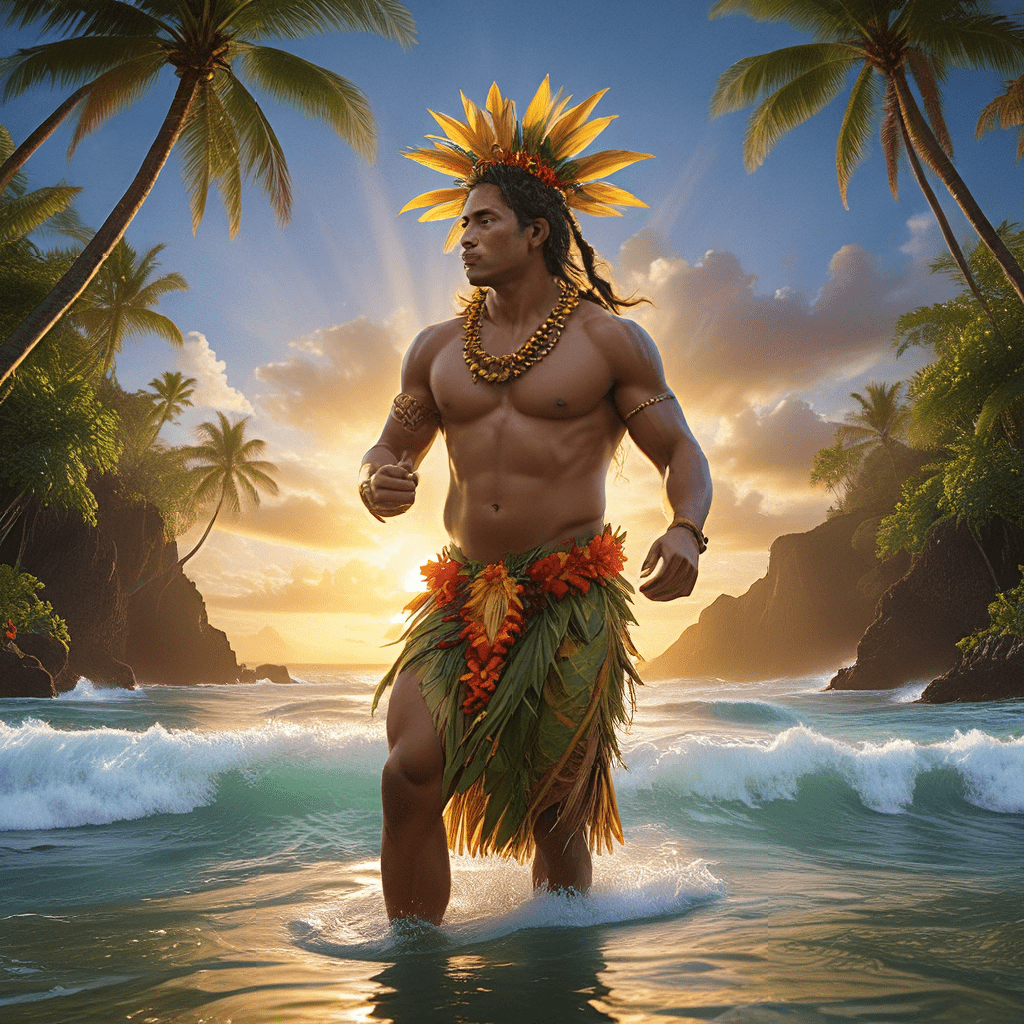Incan Gods of Nature: Guardians of the Environment
The ancient Incan civilization, known for its impressive architecture, sophisticated agricultural practices, and vast empire, held a deep reverence for the natural world. Their belief system intertwined gods and nature, shaping a strong environmental ethic that continues to resonate today. The Incan pantheon was populated by powerful deities who embodied the forces of nature, each playing a crucial role in maintaining the delicate balance of the ecosystem.
The Sacred Landscape: Where Gods and Nature Intertwine
To the Inca, the landscape was not simply a physical space but a sacred realm teeming with spiritual energy. Mountains, rivers, lakes, and even individual trees were believed to be inhabited by divine beings. The Incan worldview emphasized a profound interconnectedness between humanity and the natural world, with every element playing a vital part in the grand design of the cosmos.
Inti: The Sun God and the Source of Life
Inti, the Sun God, was the most revered deity in the Incan pantheon. As the source of all life, he held dominion over the life-giving rays that nurtured the land and sustained its inhabitants. The Incan calendar revolved around the sun's movements, with festivals and rituals dedicated to Inti's power. From dawn to dusk, the sun's journey across the sky represented the cyclical nature of life, death, and rebirth, a constant reminder of the interconnectedness of all things.
Pachamama: Mother Earth and the Spirit of Fertility
Pachamama, the Earth Mother, was revered as the provider of all sustenance. She embodied the fertile soil, the bountiful harvests, and the nurturing power of nature. Offerings of food, coca leaves, and llama sacrifices were made to Pachamama to ensure her continued benevolence and to maintain the harmony of the natural world.
Viracocha: The Creator God and the Order of the Cosmos
Viracocha, the Creator God, was responsible for bringing order to the universe. He was believed to have created the earth, the sky, and all living things. His power was vast and his presence was felt in every aspect of the natural world. Viracocha's role as the ultimate creator cemented the Incan belief in the interconnectedness and sacredness of all things.
Illapa: The Thunder God and the Bringer of Rain
Illapa, the Thunder God, was a powerful and unpredictable deity associated with storms, lightning, and rain. He played a crucial role in maintaining the balance of the ecosystem, bringing life-giving rain to the parched land. The Incan people revered Illapa for his power and feared his wrath, knowing that his storms could destroy crops and devastate communities.
Illapa's association with rain and lightning reflected the awe and reverence the Incan people held for the power of nature. To appease Illapa and ensure a bountiful harvest, they performed rituals and offered sacrifices, seeking his favor and protection. Illapa's presence was a constant reminder of the unpredictable nature of the natural world and the importance of respecting its forces.
The Guardians of the Mountains: Apus and the Sacred Peaks
The Andes Mountains, the backbone of the Incan Empire, were considered sacred spaces inhabited by powerful spirits known as Apus. These mountain deities were seen as guardians of the land, protectors of the people, and providers of life-sustaining resources. Each mountain peak held its own unique spirit, with stories and legends passed down through generations.
The Incan people believed that the Apus were responsible for the health and well-being of the entire ecosystem. They offered prayers and sacrifices to the Apus, seeking their favor and protection. Mountain summits were seen as sacred places, and pilgrimages were often made to honor the Apus and seek their blessings. Their reverence for the mountains served as a reminder of the interconnectedness of the natural world and the importance of maintaining harmony with the environment.
Rituals and Offerings: Honoring the Gods and Sustaining Balance
The Incan people understood that their survival depended on the harmonious balance of the natural world. To maintain this balance, they performed elaborate rituals and offerings to appease the gods and ensure their continued benevolence. Through these acts of reverence, they sought to maintain a respectful and reciprocal relationship with the forces of nature.
Offerings to the gods included food, coca leaves, and llama sacrifices. The Incan belief system emphasized the importance of reciprocity, meaning that humans were obligated to give back to the gods in exchange for their blessings. By offering gifts and performing rituals, they demonstrated their respect and gratitude for the gifts of nature.
The Incan Environmental Ethic: Respect and Reverence for Nature
The Incan worldview, grounded in their belief in the interconnectedness of all things, fostered a profound respect for the natural world. They recognized that every element of the ecosystem—from the mountains to the rivers, the trees to the animals—played a vital role in maintaining harmony and ensuring the well-being of humanity.
This deep reverence for nature extended to their agricultural practices. The Incan people developed sustainable farming techniques that emphasized conservation and minimized environmental damage. They used terraces to prevent soil erosion, practiced crop rotation to replenish the soil, and carefully managed water resources to ensure a steady supply. Their approach to agriculture was a testament to their understanding of the intricate relationship between humans and the environment.
The Legacy of the Incan Gods: Protecting the Environment Today
The Incan gods and their association with the forces of nature continue to inspire and influence contemporary environmentalism. The Incan emphasis on interconnectedness, reverence for nature, and the importance of maintaining balance offers valuable insights for modern societies facing the challenges of climate change and environmental degradation.
The lessons learned from the Incan civilization remind us of the importance of respecting the natural world and its intricate web of life. By embracing a similar approach to environmental stewardship, we can learn from the Incan legacy and strive to create a more sustainable and harmonious future for all.
Exploring the Impact of Incan Mythology on Modern Environmentalism
Incan mythology serves as a powerful reminder of the interconnectedness of humans and the natural world. Their reverence for the gods and their role in maintaining cosmic balance offers valuable insights for modern society, particularly in the context of environmentalism.
The Incan belief system encourages us to view the environment not simply as a resource to be exploited but as a sacred and interconnected space. This perspective can foster a deeper sense of respect and responsibility toward the natural world.
Moreover, the Incan emphasis on reciprocity and giving back to nature underscores the importance of sustainable practices. By learning from the Incan approach to agriculture and resource management, we can develop more environmentally conscious ways to live and interact with the planet.
In conclusion, the legacy of the Incan gods and their association with the forces of nature provides a powerful framework for understanding the importance of environmental stewardship. Their enduring stories and beliefs offer valuable lessons for modern society, reminding us of the deep connection between humanity and the natural world.
FAQ
Q: What is the main belief behind Incan gods of nature?
A: The Incan people believed their gods were manifestations of the forces of nature, each holding a unique power and responsibility in maintaining the balance of the ecosystem.
Q: How did Incan people honor their gods?
A: They performed elaborate rituals, offered food, coca leaves, and llama sacrifices to appease the gods and ensure their continued benevolence.
Q: What were the environmental practices of the Incan people?
A: They developed sustainable agricultural techniques that emphasized conservation and minimized environmental damage. They used terraces to prevent soil erosion, practiced crop rotation to replenish the soil, and carefully managed water resources.
Q: How can Incan mythology influence modern environmentalism?
A: It encourages us to view the environment not simply as a resource but as a sacred and interconnected space, fostering a deeper sense of respect and responsibility toward the natural world. It also highlights the importance of sustainable practices and living in harmony with nature.



